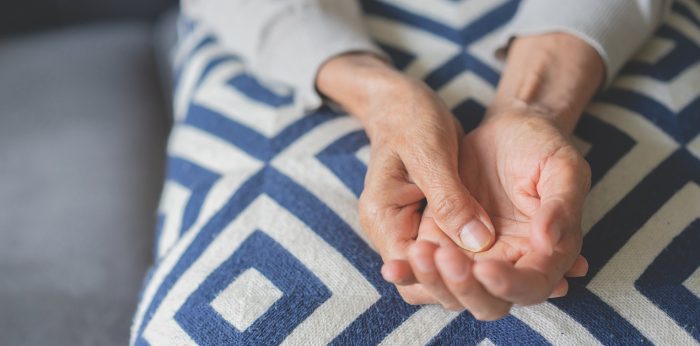Taking calcium may only help if you’re deficient
By David M. Dunaief, M.D.

We should all be concerned about osteoporosis risk. According to the Bone Health & Osteoporosis Foundation, 50 percent of women and 25 percent of men will break at least one bone due to osteoporosis (1). Hip fractures are especially concerning, because they increase mortality risk dramatically. More than 50 percent of hip fracture survivors are no longer able to live independently (2).
Do we need to consume more dairy?
Studies suggest that milk and other dairy products may not be as beneficial as we have been raised to believe.
Studies have shown milk may not be beneficial for preventing osteoporotic fractures. Specifically, in a meta-analysis that used data from the Nurses’ Health Study for women and the Health Professionals Follow-up Study for men, neither men nor women saw any benefit from milk consumption in preventing hip fractures (3).
In a 2020 meta-analysis of several past studies, researchers concluded that increased consumption of milk and other dairy products did not lower osteoporosis and hip fracture risks (4).
Generally, studies suggest that dairy may cause additional health problems. The results of a large, 20-year, observational study involving men and women in Sweden showed that milk may be harmful (5). When comparing those who consumed three or more cups of milk daily to those who consumed less than one, there was a 93 percent increased risk of mortality in women between the ages of 39 and 74.
Dosage also mattered. For every one glass of milk consumed, there was a 15 percent increased risk of death for women. There was a much smaller, but significant, three percent per glass increased risk of death in men. For both women and men, researchers found biomarkers in the urine that indicated higher levels of oxidative stress and inflammation.
Remember: these are only associations, not decisive conclusions. The researchers surmise that milk has high levels of D-galactose, a simple sugar that may increase inflammation.
Interestingly, the USDA recommends that, from the age of 9 through adulthood, we consume about three cups of dairy per day (6).
Should we take calcium supplements?
We know calcium is a required element for strong bones, but do supplements really prevent osteoporosis and subsequent fractures? While the data are mixed, it suggests supplements may not be the answer for those who are not calcium deficient.
In a meta-analysis involving a group of observational studies, there was no statistically significant improvement in hip fracture risk in those men or women ingesting at least 300 mg of calcium from supplements and/or food daily (7).
The researchers did not differentiate among the types of foods containing calcium. In a group of randomized controlled trials analyzed in the same study, those taking 800 to 1,600 mg of calcium supplements per day also saw no increased benefit in reducing nonvertebral fractures. In four clinical trials, the researchers saw an increase in hip fractures among those who took calcium supplements. A weakness of this large study is that vitamin D baseline levels, exercise and phosphate levels were not considered in the analysis.
Does vitamin D supplementation reduce risk?
Finally, though the data are not always consistent for vitamin D, it appears it may be valuable when it comes to fracture prevention. In a meta-analysis involving 11 randomized controlled trials, vitamin D supplementation resulted in fewer fractures (8). When patients were given a median dose of 800 IUs (ranging from 792 to 2,000 IUs) of vitamin D daily, those who were aged 65 and over experienced a 14 percent reduction in nonvertebral fractures and an even greater 30 percent reduction in hip fractures. However, vitamin D in lower levels did not significantly reduce fracture risk.
Where does that leave us?
Our knowledge of dietary approaches is continually evolving. Dairy’s role may be an example of this. No definitive statement can be made about calcium, although even in randomized controlled trials with supplements, there was no significant benefit. However, the patients in these trials were not necessarily deficient in calcium nor vitamin D.
To prevent fracture, older patients may need at least 800 IUs of vitamin D supplementation per day.
Remember that treatment and prevention approaches should be individualized, and deficiencies in vitamin D or calcium should usually be treated, of course. Please, talk to your doctor before adding or changing any supplements.
References:
(1) www.bonehealthandosteoporosis.org. (2) EndocrinePractice. 2020 May;26(supp 1):1-46. (3) JAMA Pediatr. 2014;168(1):54-60. (4) Crit Rev Food Sci Nutr. 2020;60(10):1722-1737. (5) BMJ 2014;349:g6015. (6) health.gov. (7) Am J Clin Nutr. 2007 Dec;86(6):1780-1790. (8) N Engl J Med. 2012 Aug. 2;367(5):481.
Dr. David Dunaief is a speaker, author and local lifestyle medicine physician focusing on the integration of medicine, nutrition, fitness and stress management. For further information, visit www.medicalcompassmd.com or consult your personal physician.


















